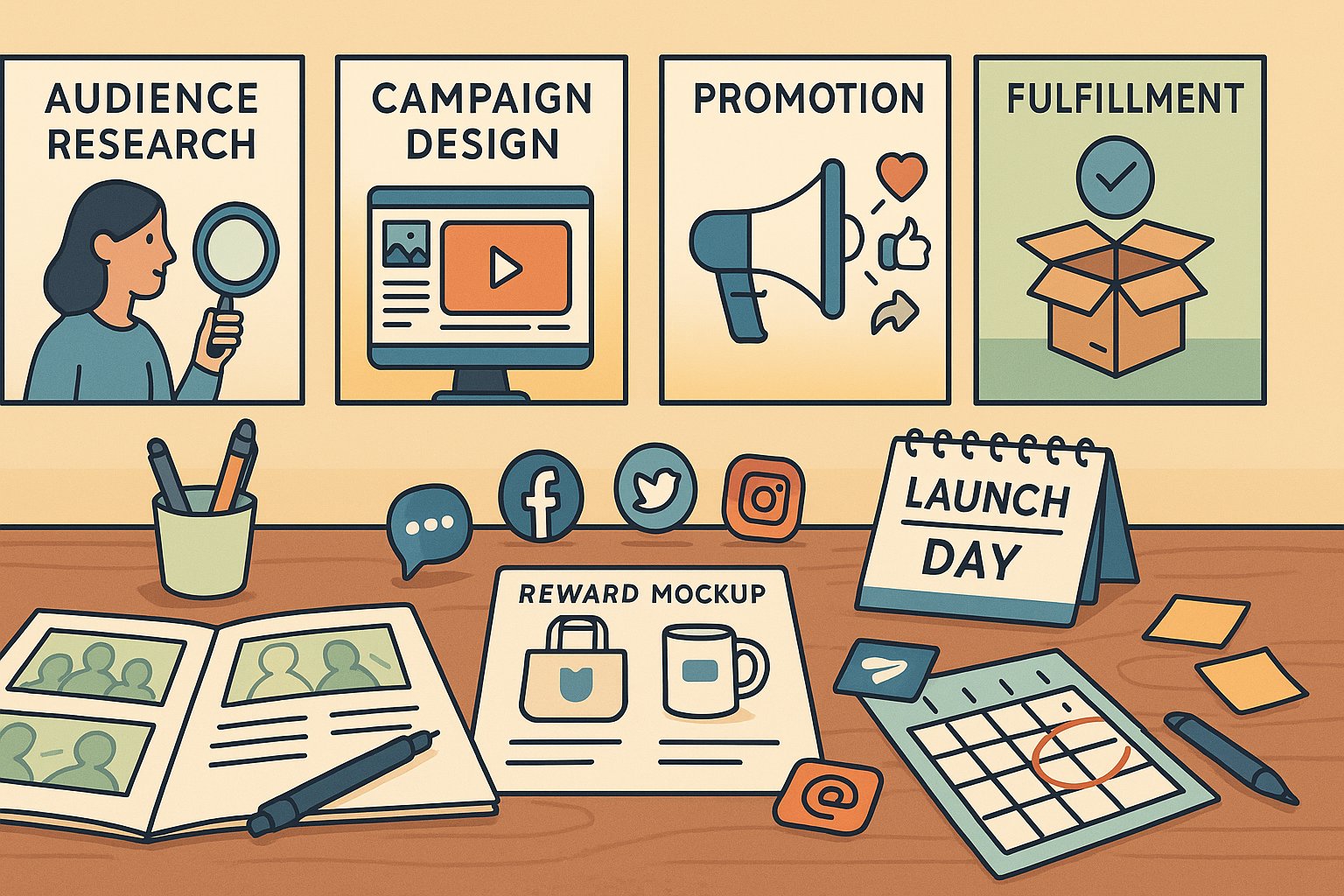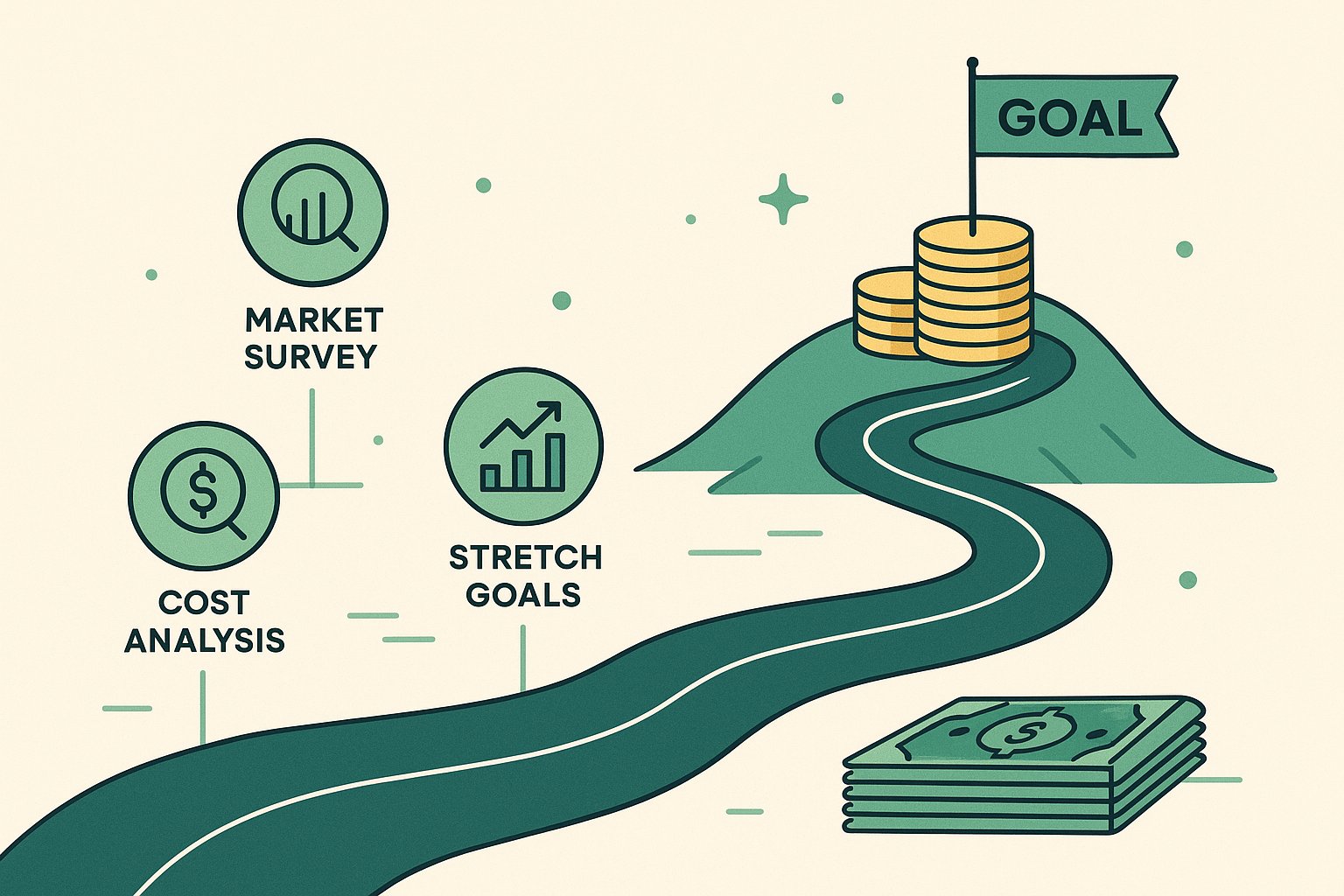Your First Steps into the Crowdfunding World
For first-time creators, the prospect of launching a crowdfunding campaign can feel both exhilarating and overwhelming. You have an idea—perhaps an innovative gadget, an inspiring film, or a community-driven initiative—and you see crowdfunding as the bridge between concept and reality. But where do you begin? Unlike traditional fundraising, crowdfunding demands a combination of strategic planning, emotional storytelling, technical savvy, and constant community engagement. In this opening section, we’ll look into why a meticulously crafted campaign plan is the key to success for first-timers. Before you hit the “Launch” button, you must align your vision, resources, and timeline in a way that inspires backers to pledge their support. At its heart, crowdfunding is a form of pre-selling: you invite people to invest in your project before it fully exists, and you promise to deliver the finished product or experience in return. This dynamic creates both opportunity and responsibility. You have the freedom to tap into a global audience without giving up equity or accruing debt, but you also bear the obligation to manage expectations, timelines, and deliverables with transparency and professionalism. Building a strong campaign plan starts with research. First-timers must explore successful campaigns in similar categories, analyzing their funding levels, reward structures, and promotional tactics. This competitive intelligence helps you understand backer psychology—what excites potential supporters, what questions they ask, and what assurances they require before pledging. Equally important is assessing your own bandwidth: crowdfunding campaigns demand significant time for content creation, marketing outreach, and backer communication. Are you prepared to balance campaign management with your everyday responsibilities?
Understanding Crowdfunding Basics
Crowdfunding harnesses the collective power of individuals who each contribute small amounts toward a common goal. Unlike seeking a single large investment from a bank or venture capitalist, you tap thousands of backers who believe in your vision. For first-timers, the most common crowdfunding models are rewards-based and donation-based. In the rewards-based model—found on platforms like Kickstarter and Indiegogo—contributors receive tiered incentives such as early-access products, exclusive merchandise, or behind-the-scenes experiences. Donation-based platforms such as GoFundMe focus on charitable causes or personal hardships, where backers support a cause without expecting material returns.
Platform selection itself demands careful consideration. Each site has unique community norms, fee structures, and funding models. Kickstarter’s all-or-nothing approach requires meeting your funding goal to receive any funds, which provides backer confidence but risks falling short. Indiegogo’s flexible funding model allows you to keep contributions even if you don’t reach your target, though you may receive less than needed for project completion. Fees typically range from 5 to 8 percent plus payment processing charges, so you must account for these deductions when setting your goal. By mastering these fundamentals before launch, you avoid costly surprises and choose the platform that best aligns with your project’s scope and backer expectations.
Setting Clear Campaign Goals
Ambitious dreams must translate into quantifiable objectives. As a first-timer, you’ll need to define your primary funding goal—the exact dollar amount required to bring your project to life. This figure emerges from a bottom-up budget analysis: prototype development, manufacturing costs, packaging, shipping, platform fees, marketing, and a contingency buffer. Including a 10 to 20 percent contingency ensures you can handle unexpected setbacks without sacrificing quality or delivery timelines.
In addition to your financial target, establish secondary goals. These might include a minimum number of backers, a specific email list growth, or engagement milestones on social media. By articulating multiple success metrics, you create avenues for celebration even if your campaign hits bumps. For instance, reaching 100 backers provides a morale boost and fresh content for your updates. Clear goals also guide your marketing strategies: if you know you need 500 backers, you can calculate how many page views and conversions you must achieve through ads, influencer outreach, or organic search traffic. These precise targets keep your campaign on track and offer backers concrete markers of progress.
Building Your Pre-Launch Strategy
The pre-launch period is your chance to cultivate an excited, invested audience before Day One. First-timers often underestimate this critical phase, launching without an established community and scrambling to attract pledges in the campaign’s early hours. Start by creating a “coming soon” page with an email signup form, offering exclusive sneak peeks or early-bird discounts to incentivize subscriptions. Use targeted social media ads to drive traffic to this page, focusing on lookalike audiences who mirror your ideal backer profile.
Simultaneously, engage relevant online communities—industry forums, Facebook groups, Reddit subreddits—by providing genuine insights rather than promotional pitches. Share behind-the-scenes photos of your prototype, solicit feedback on design variations, or host an informal AMA (Ask Me Anything) to establish rapport. These activities build trust and turn passive observers into enthusiastic advocates who will pledge and share your campaign on launch day. As momentum builds, secure media coverage by pitching a concise press release to niche bloggers, podcasts, and local news outlets, highlighting your project’s unique angle and your journey as a first-timer. By the time you go live, you’ll have a warm email list, social buzz, and press mentions poised to generate critical early traction.
Crafting a Compelling Story and Page
Your campaign page is where storytelling meets conversion. First-time creators often focus too heavily on technical specifications and not enough on emotional resonance. To captivate backers, open with a powerful narrative that explains why your project exists: the problem you aim to solve, the flash of inspiration that sparked your idea, and the personal stakes that drive your commitment. Introduce yourself and any team members, conveying expertise and passion.
High-quality multimedia assets amplify this narrative. Invest in a concise, professionally produced video—ideally under three minutes—that showcases your prototype in action, includes testimonials from beta testers or early supporters, and features a clear call to action. Complement the video with crisp photos of your product from multiple angles, lifestyle shots illustrating real-world use cases, and simple infographics that break down project milestones and budget allocations. Structure your page with digestible sections: project overview, “Why This Matters,” rewards, stretch goals, timeline, and FAQs. By weaving facts and feelings, you transform your page into an immersive experience that motivates backers to become participants in your journey.
Designing Reward Tiers That Convert
Reward tiers are the engines that drive pledges, and first-timers often stumble by offering either too few options or an overwhelming array of choices. For optimal conversion, aim for a balanced reward structure: a small number of low-priced tiers that attract impulse pledges, mid-priced tiers that cover production costs, and premium tiers that appeal to super-fans with exclusive incentives. Early-bird specials—limited in quantity and time—create urgency, while digital rewards such as downloadable guides or behind-the-scenes access carry high perceived value with minimal fulfillment costs.
Each reward description must be crystal clear: specify exactly what backers will receive, delivery timelines, and any size, color, or customization options. Ambiguity breeds hesitation. Detail shipping regions and associated costs to prevent unexpected fees that might deter international supporters. By aligning each tier’s price point with your budget analysis and ensuring transparent descriptions, you streamline backer decision-making and maximize the average pledge value—fueling your progress toward the funding goal.
Planning Your Marketing and Promotion
A crowdfunding campaign is part marketing campaign, part product launch. First-timers frequently treat promotional efforts as secondary, posting sporadic updates on social media without a cohesive strategy. Instead, map out a marketing calendar that spans the entire campaign lifecycle: pre-launch teasers, launch-day blasts, mid-campaign incentives, and final-week urgency pushes. Leverage a mix of organic and paid channels. Organic reach comes from your email list, social communities, and influencer collaborations, while paid campaigns on Facebook, Instagram, and Google Ads extend your reach to lookalike audiences.
Regularly track key metrics—click-through rates, cost per acquisition, conversion rates—and adjust ad creative and targeting accordingly. Use UTM parameters to attribute pledges to specific campaigns, enabling data-driven decisions. Complement digital ads with earned media: pitch fresh angles to bloggers and journalists mid-campaign, share milestone announcements as news hooks, and invite key influencers to demo your prototype on video. By treating your crowdfunding effort as a 360-degree promotional push, you avoid the feast-or-famine cycle that dooms many first-time campaigns.
Managing Your Campaign Live
Once your campaign goes live, the cadence of execution and adaptation becomes critical. The first 48 hours set the tone: celebrate early backers with personal thank-you messages and spotlight their names in updates. Monitor platform analytics to identify traffic sources driving the most pledges and reallocate resources—whether it’s additional ad spend or influencer outreach—to those high-performing channels. Maintain a regular update schedule: at minimum once per week, but often more frequently when milestones or stretch goals are achieved.
Live management also involves vigilance in the comments and direct messages sections. Promptly answer questions, address concerns, and clarify any misunderstandings. When challenges arise—manufacturing delays or design tweaks—communicate transparently, explaining the issue, outlining corrective steps, and providing revised timelines. This level of responsiveness fosters trust and converts critics into advocates. Above all, remain flexible: if a particular promotion falls flat, test a new angle; if a community channel shows unexpected promise, double down on engagement there. Agile campaign management turns first-timers into seasoned crowdfunding navigators.
Effective Communication with Backers
Backers invest not just money but trust in your ability to deliver. Consistent, honest communication cements that trust. Beyond platform updates, send periodic email newsletters that showcase behind-the-scenes progress: prototype testing footage, manufacturing factory visits, or packaging design mockups. Personalize messages when possible, acknowledging high-tier backers or spotlighting user-generated content they’ve shared. This two-way dialogue transforms your campaign into a community-driven endeavor rather than a one-sided solicitation.
When setbacks occur, transparency is your greatest ally. Declare the problem, offer a concrete plan to address it, and thank supporters for their patience. Too many first-timers hide issues until frustration erupts; instead, embrace open communication as a cornerstone of backer relations. By maintaining a clear, empathetic dialogue, you ensure that supporters feel valued and informed, reducing cancellations and preserving goodwill even when timelines shift.
Fulfilling Rewards and Post-Campaign Next Steps
Reaching your funding goal is a milestone, not the finale. Immediate post-campaign actions set the tone for long-term success. Launch a survey to collect backer preferences—shipping addresses, reward variations, or personalization details—and consolidate data for fulfillment partners. Finalize manufacturing and shipping agreements based on precise pledge counts, verifying production timelines and quality-control processes. As you move into fulfillment, communicate progress regularly: shipment dates, tracking numbers, and any challenges encountered.
Simultaneously, transition your campaign community into a broader ecosystem. Invite backers to join a dedicated mailing list, social media group, or membership program where they receive early access to future products, special offers, or exclusive content. Analyze campaign data—conversion rates, reward popularity, traffic sources—to inform your next project or product launch. Many first-timers underestimate the value of this post-campaign period, but it provides a treasure trove of insights and establishes a loyal customer base eager for your future endeavors.
Your Roadmap to Crowdfunding Success
For first-timers, crowdfunding campaign planning may seem daunting, but with a structured approach and willingness to learn, you can navigate every stage with confidence. From grasping the basics and setting clear goals to building pre-launch momentum, creating an engaging campaign page, and executing strategic marketing, each phase offers opportunities to solidify backer trust and accelerate funding. Remember that every interaction—from your opening narrative to final reward delivery—reinforces your professionalism and dedication. By avoiding common pitfalls and embracing adaptive, community-focused strategies, you transform your initial idea into a fully funded reality and pave the way for future success. Good luck on your crowdfunding journey; the crowd is ready to champion your vision!




